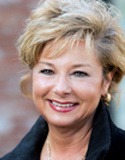November 2018
Washington State Bank & Its CEO Featured in Independent Banker Article
Editor’s Note: The following was excerpted from an article that ran in the September 2018 edition of the Independent Banker magazine titled, "How 125-year-old community banks stay up to date" by Katie Kuehner-Hebert. To read the full article, click here.
|

|
|
Durand
|
Washington State Bank was founded in 1893 to stay ahead of the dramatic changes in technology that were occurring at the end of the 19th century, says Sue Soileau Durand, president, CEO and chairman of the $191 million-asset community bank.
At the time, Washington was the largest port city between New Orleans and St. Louis, but the steamboat era was coming to an end, and railroads arrived in 1891. The founders recognized the economy would expand at a much faster pace than it had been, increasing demand for banking services locally.
“The bank was founded in 1893 due to the creativity of townspeople who did not want to rely on New Orleans banks any longer,” Durand says.
On April 21, 1893, the Opelousas Courier wrote: “We are pleased to see our neighbors of Washington showing such evidence of enterprise and progressiveness as the establishment of a bank with a $50,000 capital. … [It] presages a bright future in store for our sister town.”
Durand recalls a former bank director telling her the bank was able to stay open during the Depression because it was so remotely located that it enjoyed a longer “bank holiday” before regulators could visit.
“The regulators began with large banks in the urban areas and only much later got to smaller banks in smaller communities,” she says. “But then their stagecoach could not get to the bank during the Depression to alert the bank to close. It was wintertime—lots of mud.”
While that’s a true story, Durand says the bank was also able to survive because of “the conservative community service banking philosophy it has always maintained.”
Where will your bank be in another 125 years?
“Exactly where we started: abreast of technological changes and still serving the needs of the local communities. That is always the goal of a great community bank.” —Sue Soileau Durand, Washington State Bank
Perhaps the bank’s greatest challenge came in the 1980s, when Louisiana’s laws changed to allow banks to operate branches in multiple parishes. After that, many larger banks moved into Washington State Bank’s St. Landry Parish area, says Durand. After the economy in its home market declined, the bank decided to expand into adjacent parishes itself.
Today, the bank has branches in six communities in and around “the virtual crossroads” of I-10 and I-49, expanding its products and services to both individuals and businesses, Durand says. “The bank started with $50,000 in capital, and now we have close to $20 million,” she says. It uses part of its capital to launch new technologies as they emerge. These include mobile apps, remote deposit capture and online banking, as well as new offerings, such as white-labeled free checking and savings products through Kasasa.
“We’ve always been technologically savvy for a community bank,” Durand says. “We have all the bells and whistles of the large banks.”
The bank board and management’s future plans? “To remain the best community bank” and also expand farther into southern Louisiana’s Acadiana region, Durand says. “I also want to encourage more women to join my board.”
Lessons learned from a bank that’s lasted so long? “Along the line, somebody made the right decision every day,” she says. Also, “we still have the philosophy that a smile and a handshake still have value.”